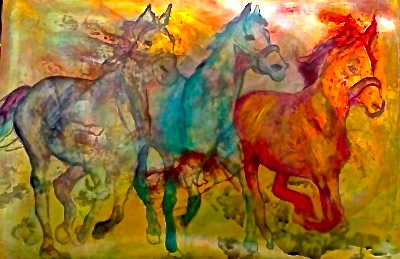When the Muses Block your Creativity
A few weeks ago, a Muse hit me on the head—not with a magical wand but with a book. It was on one of Tel Aviv’s few gloomy days. A grey wind blew outside my window, making the thought of any venture outside even more depressing than staying in. A writer’s block had occupied all corners of my keyboard. I must get out of the house, I told myself and hopped on my bike. I rode through Allenby, dodging low clouds and loud busses to arrive at Halper’s Books – one of Tel Aviv’s hidden gems for used books in English. I didn’t have a book in mind. One should approach used bookstores like an antiques store; you never know what you will find. At this point you are probably expecting me to reveal that I discovered a special edition of The Wasteland or Anne Karenina, soiled by coffee stains and breadcrumbs left from their previous owners. No. I bought almost-new copies of The Road (saw the movie but never read the book) and Alain …



You must be logged in to post a comment.